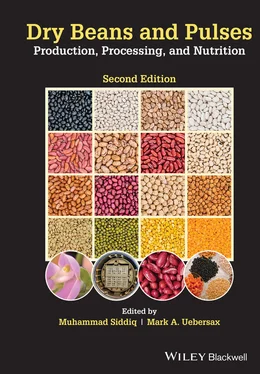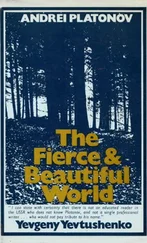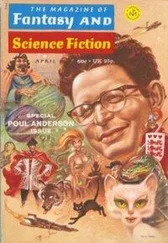Dry Beans and Pulses Production, Processing, and Nutrition
Здесь есть возможность читать онлайн «Dry Beans and Pulses Production, Processing, and Nutrition» — ознакомительный отрывок электронной книги совершенно бесплатно, а после прочтения отрывка купить полную версию. В некоторых случаях можно слушать аудио, скачать через торрент в формате fb2 и присутствует краткое содержание. Жанр: unrecognised, на английском языке. Описание произведения, (предисловие) а так же отзывы посетителей доступны на портале библиотеки ЛибКат.
- Название:Dry Beans and Pulses Production, Processing, and Nutrition
- Автор:
- Жанр:
- Год:неизвестен
- ISBN:нет данных
- Рейтинг книги:5 / 5. Голосов: 1
-
Избранное:Добавить в избранное
- Отзывы:
-
Ваша оценка:
- 100
- 1
- 2
- 3
- 4
- 5
Dry Beans and Pulses Production, Processing, and Nutrition: краткое содержание, описание и аннотация
Предлагаем к чтению аннотацию, описание, краткое содержание или предисловие (зависит от того, что написал сам автор книги «Dry Beans and Pulses Production, Processing, and Nutrition»). Если вы не нашли необходимую информацию о книге — напишите в комментариях, мы постараемся отыскать её.
The second edition of the most complete and authoritative reference on dry beans production, processing, and nutrition available Dry Beans and Pulses: Production, Processing, and Nutrition
Dry Beans and Pulses: Production, Processing, and Nutrition, Second Edition
Dry Beans and Pulses Production, Processing, and Nutrition — читать онлайн ознакомительный отрывок
Ниже представлен текст книги, разбитый по страницам. Система сохранения места последней прочитанной страницы, позволяет с удобством читать онлайн бесплатно книгу «Dry Beans and Pulses Production, Processing, and Nutrition», без необходимости каждый раз заново искать на чём Вы остановились. Поставьте закладку, и сможете в любой момент перейти на страницу, на которой закончили чтение.
Интервал:
Закладка:
12 CGIAR (Consultative Group on International Agriculture Research). (2011). The CGIAR at 40 and Beyond: Impact that matters for the poor and planet. Washington, DC: CGIAR Fund Office.
13 Clemente, A. & Olias, R. (2017). Beneficial effects of legumes in gut health. Current Opinion in Food Science 14: 32–36.
14 Dilis, V, Trichopoulou, A. (2009). Nutritional and health properties of pulses. Mediterranean Journal of Nutrition and Metabolism 1: 149–157.
15 Donangelo, C.M., Trugo, L.C., Trugo, M.F. & Eggum, B.O. (1995). Effect of germination of legume seeds on chemical composition and on protein and energy utilization in rats. Food Chemistry 53: 23–27.
16 FAO (Food and Agriculture Organization). (2020). Crop Production and Trade Data. Available at http://www.fao.org/faostat/en/#data(accessed December 30, 2020).
17 Fernando, S. (2021). Production of protein‐rich pulse ingredients through dry fractionation: A review. LWT 141: p.110961.
18 FTF (Feed the Future). (2021). Innovation Lab for Legume Systems Research. Available at https://www.canr.msu.edu/legumelab/index(accessed January 20, 2021).
19 GAP.org (globalagriculturalproductivity.org) (2016). GAP Report – 2016: Sustainability in an Uncertain Season. Available at https://globalagriculturalproductivity.org/wp‐content/uploads/2018/10/2016_GAP_Report.pdf(accessed January 26, 2021).
20 GAP.org (globalagriculturalproductivity.org) (2021). Pulses: The heartbeat of nutritious, sustainable agriculture. Available at https://globalagriculturalproductivity.org/pulses‐the‐heartbeat‐of‐nutritious‐sustainable‐agriculture/(accessed January 26, 2021).
21 Geil, P.B. & Anderson, J.W. (1994). Nutritional and health implications of dry beans: a review. Journal of the American College of Nutrition 13: 549–558.
22 Gepts, P. (2001). Plaseolus vulgaris (Beans). In: Encyclopedia of Genetics (eds. S. Brenner & J.H. Miller), pp. 1444–1445. Cambridge, Academic Press.
23 Gogoi, N., Baruah, K.K. & Meena, R.S. (2018). Grain legumes: impact on soil health and agroecosystem. In: Legumes for Soil Health and Sustainable Management (eds. R.S. Meena, A. Das, G.S. Yadav, R. Lal), pp. 511–539). Singapore: Springer.
24 Grigolo, S. & Fioreze, A.D.C. (2018). Potential of hybridization among cultivars of common beans of different gene groups. Colloquium Agrariae 14: 67–78.
25 Hall C. (2021). Pulses: milling and baking applications. In: Breeding for Enhanced Nutrition and Bioactive Compounds in Food Legumes (eds. D.S. Gupta, S. Gupta, J. Kumar), pp. 221–228. Cham, Switzerland: Springer.
26 Hangen, L. & Bennink, M.R. (2002). Consumption of black beans and navy beans (Phaseolus vulgaris L.) reduced azoxymethane‐induced colon cancer in rats. Nutrition & Cancer 44: 60–65.
27 Hardenburg, E.V. (1927). Bean Culture. New York, NY: The Macmillan Company. 238p.
28 Hayat, I., Ahmad, A., Masud, T., Ahmed, A. & Bashir, S. (2014). Nutritional and health perspectives of beans (Phaseolus vulgaris L.): an overview. Critical Reviews in Food Science and Nutrition 54: 580–592.
29 Hidalgo, R. (1988). The Phaseolus world collection. In: Genetic Resources of Phaseolus Beans (ed. P. Gepts), pp. 67–90. Dordrecht, the Netherlands: Kluver.
30 Hosfield, G.L. & Uebersax, M.A. (1980). Variability in physico‐chemical properties and nutritional components of tropical and domestic dry bean germplasm. Journal of the American Society of Horticultural Scientists 105: 246–252.
31 HSPH (Harvard School of Public Health) (2020). Legumes and Pulses. Available at https://www.hsph.harvard.edu/nutritionsource/legumes‐pulses/(accessed December 30, 2020).
32 IYP (International Year of Pulses). (2016). Nutritious Seeds for Sustainable Future. Available at http://www.fao.org/pulses‐2016/en/(accessed January 01, 2020).
33 Kamboj, R. & Nanda, V. (2018). Proximate composition, nutritional profile and health benefits of legumes − A review. Legume Research‐An International Journal 41: 325–332.
34 Khader, V. & Uebersax, M.A. (1989). Legumes in Indian diets. Michigan Bean Digest 13(4): 10–13.
35 Kumari, P.V. & Sangeetha, N. (2017). Nutritional significance of cereals and legumes based food mix‐A review. International Journal of Agricultural and Life Sciences 3: 115–122.
36 Kutos, T., Golob, T., Kac, M. & Plestenjak, A. (2002). Dietary fiber of dry processed beans. Food Chemistry 80: 231–235.
37 Lajolo, F.M. & Genovese, M.I. (2002). Nutritional significance of lectins and enzyme inhibitors from legumes. Journal of Agricultural & Food Chemistry 50: 6592–6598.
38 Liu, Y., Wu, L., Baddeley, J.A. & Watson, C.A. (2011). Models of biological nitrogen fixation of legumes. Sustainable Agriculture 2: 883–905.
39 Lucier, G. & Davis, W. (2020). Vegetables and Pulses Outlook. Publication VGS‐365 (December), U.S. Department of Agriculture, Economic Research Service, Washington, DC.
40 Lucier, G., Lin, B.H., Allshouse, J. & Kantor, L.S. (2000). Factors affecting dry bean consumption in the United States. Publication VGS‐280 (April), U.S. Department of Agriculture, Economic Research Service, Washington, DC.
41 Maphosa, Y. & Jideani, V.A. (2017). The role of legumes in human nutrition. In: Functional Food‐Improve Health through Adequate Food (ed. M.C. Hueda), pp. 103–121. Rijeka, Croatia: InTech.
42 Martinez‐Romero, E. (2003). Diversity of Rhizobium–Phaseolus vulgaris symbiosis: Overview and perspectives. Plant and Soil 252: 11–23.
43 Mitchell, D.C., Lawrence, F.R., Hartman, T.J. & Curran, J.M. (2009). Consumption of dry beans, peas, and lentils could improve diet quality in the US population. Journal of American Dietetic Association 109: 909–913.
44 Mudryj, A.N., Yu, N. & Aukema, H.M. (2014). Nutritional and health benefits of pulses. Applied Physiology, Nutrition, and Metabolism 39: 1197–1204.
45 Njintang, N.Y., Mbofung, C.M.F. & Waldron, K.W. (2001). In vitro protein digestibility and physicochemical properties of dry red bean (Phaseolus vulgaris) flour: Effect of processing and incorporation of soybean and cowpea flour. Journal of Agricultural & Food Chemistry 49: 2465–2471.
46 Oomah, B.D., Tiger, N., Olson, M. & Balasubramanian, P. (2006). Phenolics and antioxidative activities in narrow‐leafed lupins (Lupinus angustifolius L.). Plant Foods for Human Nutrition 61: 91–97.
47 Perera, T., Russo, C., Takata, Y. & Bobe, G. (2020). Legume consumption patterns in US adults: National Health and Nutrition Examination Survey (NHANES) 2011–2014 and Beans, Lentils, Peas (BLP) 2017 Survey. Nutrients 12: 1237.
48 Pratap, A., Das, A., Kumar, S. & Gupta, S. (2021). Current perspectives on introgression breeding in food legumes. Frontiers in Plant Science 11: 589189.
49 Raju, J. & Mehta, R. (2008). Cancer chemopreventive and therapeutic effects of diosgenin, a food saponin. Nutrition & Cancer 61: 27–35.
50 Sathe, S.K. (2012). Chemistry and implications of antinutritional factors in dry beans and pulses. In: Dry Beans and Pulses: Production, Processing and Nutrition (eds. M. Siddiq, M.A. Uebersax), pp. 359–377. Ames, IA: Blackwell Publishing.
51 Schneider, A.V.C. (2002). Overview of the market and consumption of pulses in Europe. British Journal of Clinical Nutrition 88(Suppl 3): S243–S250.
52 Schumacher, S. & Boland, M. (2017). Dry Edible Bean Profile. Available at https://www.agmrc.org/commodities‐products/grains‐oilseeds/dry‐edible‐bean‐profile(accessed December 2, 2020).
53 Siddiq, M. & Uebersax, M.A. (2012). Dry Beans and Pulses Production and Consumption – An Overview. In: Dry Beans and Pulses Production, Processing and Nutrition, first edition (eds. M. Siddiq, M.A. Uebersax), pp. 3−27. Ames, IA: John Wiley & Sons.
54 Sozer, N., Holopainen‐Mantila, U. & Poutanen, K. (2017). Traditional and new food uses of pulses. Cereal Chemistry 94: 66–73.
Читать дальшеИнтервал:
Закладка:
Похожие книги на «Dry Beans and Pulses Production, Processing, and Nutrition»
Представляем Вашему вниманию похожие книги на «Dry Beans and Pulses Production, Processing, and Nutrition» списком для выбора. Мы отобрали схожую по названию и смыслу литературу в надежде предоставить читателям больше вариантов отыскать новые, интересные, ещё непрочитанные произведения.
Обсуждение, отзывы о книге «Dry Beans and Pulses Production, Processing, and Nutrition» и просто собственные мнения читателей. Оставьте ваши комментарии, напишите, что Вы думаете о произведении, его смысле или главных героях. Укажите что конкретно понравилось, а что нет, и почему Вы так считаете.












